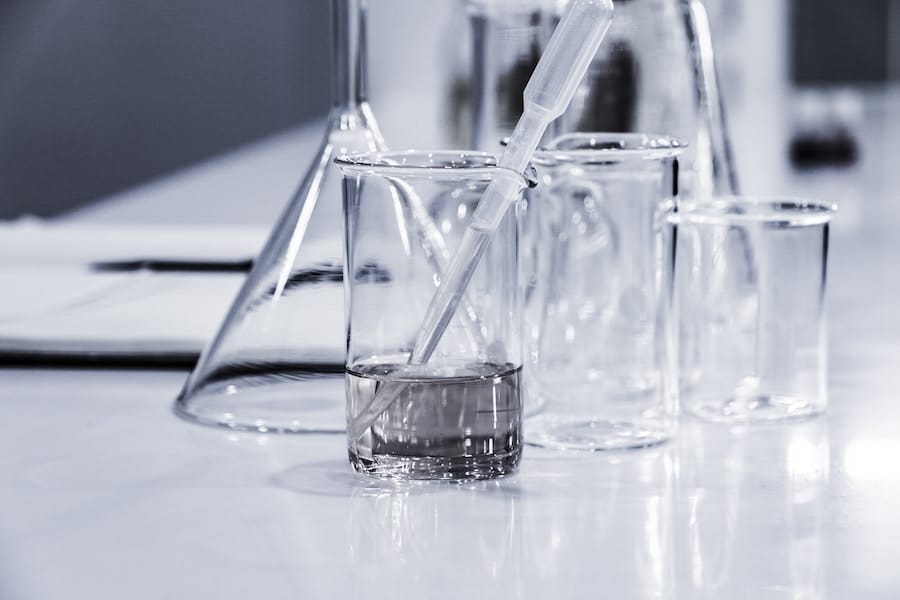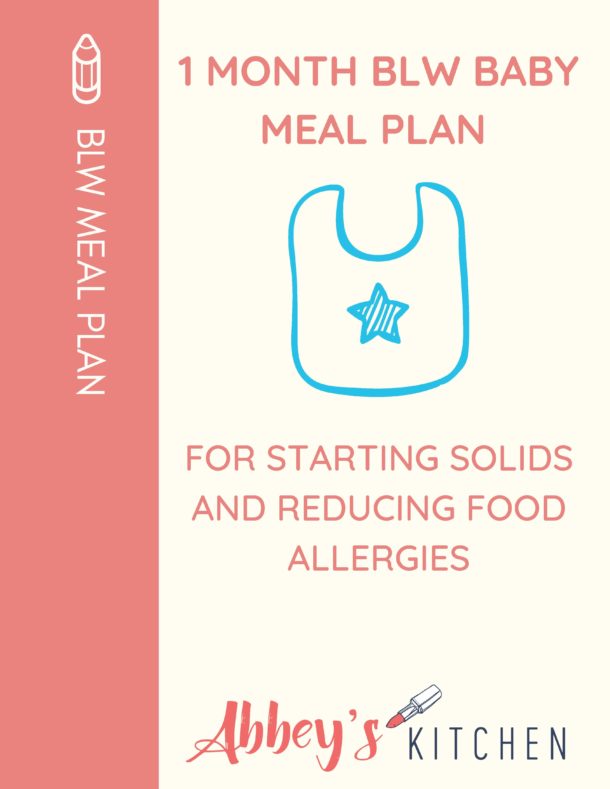We discuss colic in babies and dairy, and the research around whether or not breastfeeding moms should go dairy free.
When I was breastfeeding in the early days of my son’s life, we were told he had low-grade colic (and if that was LOW GRADE, heaven help the mamas who have it worse). But to paint a picture for you it seemed like if he wasn’t sleeping, he was crying all the live-long-day. My doctor suggested I cut out dairy since he was exclusively receiving my milk, and out of desperation, I gave it a go. Did it work? Not for me. He continued with his cranky self for another month until turned 4 months and bam, he was a happy kid. But I hear from a lot of moms that while it totally sucked not to eat ice cream or brie cheese (especially after 9 months of giving the good stuff up), cutting out dairy in those early days saved their sanity and breastfeeding journey. But is there any research to support these alleged link between colic in babies and dairy? We wanted to check this out.
What is Colic in Babies?

Colic is when a baby is demonstrating loud, inconsolable periods of crying for no apparent reason. This usually lasts for 3+ hours a day and persists several times a week for more than 3 weeks consecutively. These intense crying spells usually start within the first 2-3 weeks after birth and generally subside when the baby is around 3 months old and occur in 17-25% of babies. For a baby to be classified as colicky, they must be gaining weight normally and be otherwise healthy. It is more than often experienced in the evenings and there is no known treatment for it, although some medications and treatments are thought to help symptoms for a short period of time.
What Causes Colic in Babies?
Unfortunately, we don’t exactly know as it is often multifactorial and also individual to each baby but here are some common theories.
Food Allergies and Intolerances from Formula or Breastmilk
It’s often thought that components of what baby is eating (either the formula or something in mom’s breastmilk) can trigger adverse reactions. In the case of breastfed babies, what the mother consumes can also play a role as proteins from the mother’s diet (like cow’s milk protein, as well as other proteins) can be present in her breast milk. This isn’t usually a bad thing as some research suggests that it can help desensitize the baby to the proteins and higher levels of IgA from cow’s milk are thought to play a role in this desensitization. However, some research suggests that the immune-mediated response to certain proteins found in food may play a role in colic symptoms in some babies. Not all (case in point, my little tot), but potentially some.
Feeding From Both Breasts Without Emptying the Breast
Breast milk is made up of fore milk (which is higher in lactose or milk sugar) and hind milk (which is higher in fat), and baby needs to drink enough from one breast to reach the fatty hind milk at the end of the feed. If baby is consistently switched to the second breast before reaching the fatty stuff, they’ll potentially be consuming a lot of lactose which may overwhelm the lactase enzyme that’s responsible for breaking down sugar. The result may look like temporary symptoms of lactose intolerance. This doesn’t mean your baby is lactose intolerant, but you may need to be more purposeful in letting baby drain the first breast (potentially with the help of compressions) before switching to the next breast.Â
Overactive Letdown Reflex
Sometimes mothers may have an overabundant and quick flow of breastmilk. This overactivity can be difficult for the baby to cope with and cause them to cough, choke or even refuse to take the breast on occasions. During this time, the baby can become very fussy and irritable, therefore, demonstrating signs of colic. It’s also common for women to have one breast that has a more active letdown than the other, which may explain why some babies have a clear preference for one breast over the other.
Acid reflux
Gastro-esophageal reflux is common for young infants, and babies can spit up acidic stomach contents, irritating their delicate esophagus. This occurs due to slow gastric emptying or in cases of upper GI disorders affecting motility (from severe neurodevelopment impairment). It can also occur when infants have a hypersensitivity/allergy to something they’re consuming (either formula, or a component of their mom’s breastmilk). Reflux can obviously be painful and irritate the esophagus, therefore, increasing colic-like symptoms.
Poor Latch
If a baby’s latch isn’t great, it’s common for baby to suck in air, which in turn causes intestinal gas. Baby also can swallow excess air simply from crying, which starts a vicious cycle where crying can perpetuate more crying. In my son’s case, it was that he had a severe lip and tongue tie when he was born, both of which were removed shortly after birth. However, because of how his mouth formed in utero due to the tongue tie, it took time for his hard palate to flatten out enough for him to form a solid latch. When his mouth finally did change and grow (around 4 months), he no longer was sucking in so much air, and was transformed into a happier babe.
Overstimulation from the environment
When being exposed to new environments, infants may become overwhelmed and find it difficult to process vast amounts of information. This overstimulation often happens at the end of a long day in a new environment, which may explain why most moms describe the “witching hour” around 5 PM.
Symptoms of Colic and Signs of Food Allergy or INTOLERANCE
As discussed above, food intolerances and allergies are a commonly cited trigger for colic in babies. If you suspect that your baby may be colicky due to something in his (or your) diet, here are some common signs to look for:
Here are some common signs of intolerance and allergy to look out for:
- Fussiness after feeding
- Crying for long periods of time
- Sleeping little/waking suddenly with obvious discomfort
- Rash/hives/eczema
- Sore bottom
- Dry skin
- Wheezing/asthma
- Congestion/cold-like symptoms
- Red and itchy eyes
- Intestinal upsets
- Constipation/diarrhea
- Green stools with mucus or blood
- Vomiting
What is Research Saying about Dairy and Colic in Babies who are Breastfed?

One study on 90 infants found that 74% of infants responded positively to a low-allergen maternal diet free of cow’s milk, eggs, peanuts, nuts, wheat, soy, and fish. Which of these allergens (or how many) actually played a role in colic symptom reduction, was not determined.
Another study put 66 mothers on a diet free of cow’s milk for one week initially, and then were told to re-introduce it back into the diet. This was repeated twice. If colic disappeared, they were then put into a randomized double-blind study. For 35 out of 66 infants, colic disappeared completely. However, for 23 infants, colic reappeared in both cases of re-introduction. Those who went on to the double-blind portion of the study continued with a dairy-free diet but they were also given gelatinous capsules with either 200g of cow’s milk whey protein or potato starch. Symptoms reappeared within 1-8 hours after re-introduction of the cow’s milk protein capsule in 35% of infants and there were no reactions after taking the placebo capsules. The researchers concluded that reducing cow milk consumption in breastfeeding mothers reduced 35% of colic in infants. So again, it doesn’t work for everyone, but may be a contributing piece.
Alternatively, another small study found that breastfeeding mothers who avoided cow’s milk found no reduction in the rate of colic in babies. Interestingly, chocolate appeared to be a bigger culprit than milk. One thing to note, however, is that soy milk was used as the comparison to cow’s milk, and because this is also a common allergen, it could have skewed the results.
So it’s clear that this is controversial and absolutely not conclusive. And like most nutrition outcomes, is undeniably an individual thing. However, a 2008 clinical report in Pediatrics concluded that current evidence isn’t supportive of maternal dietary restrictions (for most healthy women) during pregnancy or lactation. What is recommended is breastfeeding for at least 4 months, as exposing babies to antigens in breastmilk may help prevent atopic dermatitis, cow’s milk allergy and wheezing.
What about Dairy Based Formula and Colic?
For babies who are formula fed, the evidence on colic in babies and dairy formula is conflicting, at best. One super small 19-person study reported that consuming cow’s milk formula resulted in an average crying time of 17.3 hours per week in comparison to soy formula that resulted in 12.7 hours per week. Comparing hydrolyzed formulas (that is, formulas that have been broken down into smaller peptides) with regular standard formula have had mixed results. One study with 43 infants reported that 8/23 of infants on a hydrolyzed formula saw a reduction in colic compared with 5/20 of standard formula babies. Small differences, but still technically significant. Another concurred, with hydrolyzed formula babies having 1.76 colic episodes compared with 3.32 in the standard formula group. So while the evidence we do have so far is based on very small sample sizes, and we absolutely need more robust research to confirm, it’s possible that hydrolyzed dairy based formulas may be helpful for some formula fed babies suffering from colic.
Could Dairy Elimination while Breastfeeding or Formula Feeding Cause an Allergy?
This is a controversial topic but something I’ve been thinking about as I see a lot of parents just opting to go dairy free with their kiddos. The answer? We don’t really know. Early research suggests that maternal elimination of cow’s milk while breastfeeding may actually be associated with the development of a cow’s milk allergy in babies. Why? They found that when mothers consume cow’s milk, levels of IgA (an antibody that plays a role in immune function) in breastmilk are much higher. Secretory IgA is thought to provide a protective effect, favour tolerance development and therefore prevent cow’s milk allergy.
However, this may not be the case for high risk babies. Studies conducted by Chandra et al. (1986) and Zeiger et al. (1989) have suggested that avoiding common allergens during lactation could benefit at risk infants (those with atopic mothers) by decreasing incidence of atopic eczema. A study conducted by Hattevig et ul. (1989, 1990) also favored this hypothesis stating, “Both groups concluded that maternal dietary intervention during the period of breast-feeding afforded a significant reduction in the incidence of atopic eczema in at-risk infants. Lower milk-specific antibody levels were also found in the intervention group compared with the other two groups at 6 months. A more recent (albeit) small study looked at the effect of a maternal milk-free diet on immune response and allergy in at-risk babies. Not surprisingly, infants born from mothers with no allergic predisposition had a much lower incidence of allergy compared to infants born from mothers who did have a milk allergy. However, when comparing the allergic moms who followed a milk free diet with the allergenic moms who ate dairy, they found lower rates of allergy in the milk-free babies. This was a super small study so we definitely need more time and evidence before we can make any recommendations. This was also specific for milk allergy, and not lactose intolerance.
So where does that lead us? Well, if consuming cow’s milk causes you (the mother) discomfort, or you’re noticing it may play a role in your baby’s colic symptoms, then this is a true benefit and risk analysis, and like everything, is something to discuss with your doctor.
Suggested Method for Elimination of DairyÂ
If you’re a dairy loving breastfeeding mama with a baby suffering from colic, and want to trial a dairy-free diet, it’s recommended you allow yourself at least 10-14 days to gage any result. This would mean removing cow’s milk, yogurt, cheese, butter and ice-cream. Throughout the elimination period, you would want to closely monitor the baby and look for any signs of improvement. If there is no colic improvement, you can then reintroduce dairy back into the diet. If the baby reacts positively, you can still try to add in a small amount of dairy at a time. As discussed earlier, most babies can tolerate some dairy, so see what amount is best before the colic symptoms return.
What are the Nutritional Concerns of Eliminating Dairy? How do we do it Safely?
As with any type of elimination diet, there is nutritional risk when you cut out a food group. This is especially true for going dairy-free while breastfeeding as lactating women’s nutritional needs are enhanced and dairy is an easy, palatable and relatively inexpensive way to fill those gaps. Also, ice cream is DELISH. The main nutrients of concern are calcium, protein, and vitamin D so you would have to make extra effort to look for alternative sources.
Here are some options you may want to incorporate into your diet when temporarily eliminating dairy:
1.Calcium
- Dark leafy greens like kale, collard, swiss chard, okra, and broccoli
- Soy milk, soy beans, tofu
- Nuts
- Some fish (with bones) like sardines and salmon
2. Protein
Image source: Carnivore Style
- Meat, poultry, fish
- Tofu
- Beans and legumes
- Nuts and seeds
3. Vitamin D
- Fatty fish (tuna, mackerel & salmon)
- Eggs
- Vitamin D fortified foods (cereal, soy milk, orange juice)
- Vitamin D supplement (speak with your doctor or dietitian before taking any supplements)
Bottom Line on Dairy and Colic in Babies
If you’ve ruled out breastfeeding technique, digestive issues, and other common symptoms, and are at your wits end (I get it), you may want to attempt removing dairy temporarily until symptoms reside. Personally, dairy wasn’t the culprit for us, time was. As soon as Baby E and I got through the “100 days of darkness”, he transformed into a SUPER happy kid. He still is drinking mamas milk (and I eat a lot of dairy), and ADORES ricotta, yogurt, butter, cheese and the occasional lick of mama’s ice cream. If you’re unsure of how to meet your needs without dairy, be sure to speak to a Registered Dietitian to help guide you through the elimination and reintroduction process. Good luck mamas, you got this!
Contribution By:
Gabriela Abreu
Updated on August 8th, 2020

Abbey Sharp is a Registered Dietitian (RD), regulated by the Ontario College of Dietitians. She is a mom, YouTuber, Blogger, award winning cookbook author, media coach specializing in food and nutrition influencers, and a frequent contributor to national publications like Healthline and on national broadcast TV shows.











Suzy says
Great to read this article. My 9 week old has terrible colic or a CMPA.
We feel like we go around in circles. Eliminating dairy from my diet has definitely helped! Hopefully we have a happy child after 100 days too!
Abbey Sharp says
Thats great to hear! Im glad the article was helpful
dixya @food, pleasure, and health says
what a comprehensive guide. i know where to come in the future 🙂
Abbey Sharp says
yes!
Bethany Rutledge says
Thanks for sharing this important info about colic. We dealt with this over here for ten months and are just now getting some respite.
Abbey Sharp says
im glad!
Deborah Brooks says
My daughter is 22 now but she had colic and reflux.. It was a horrible two years over here!
Abbey Sharp says
Ugh, sounds awful.
Nicole from Fitful Focus says
This blog is going to be my go-to place when my husband and I decide to have kids. You always have such great info!
Abbey Sharp says
Awesome! Thanks love